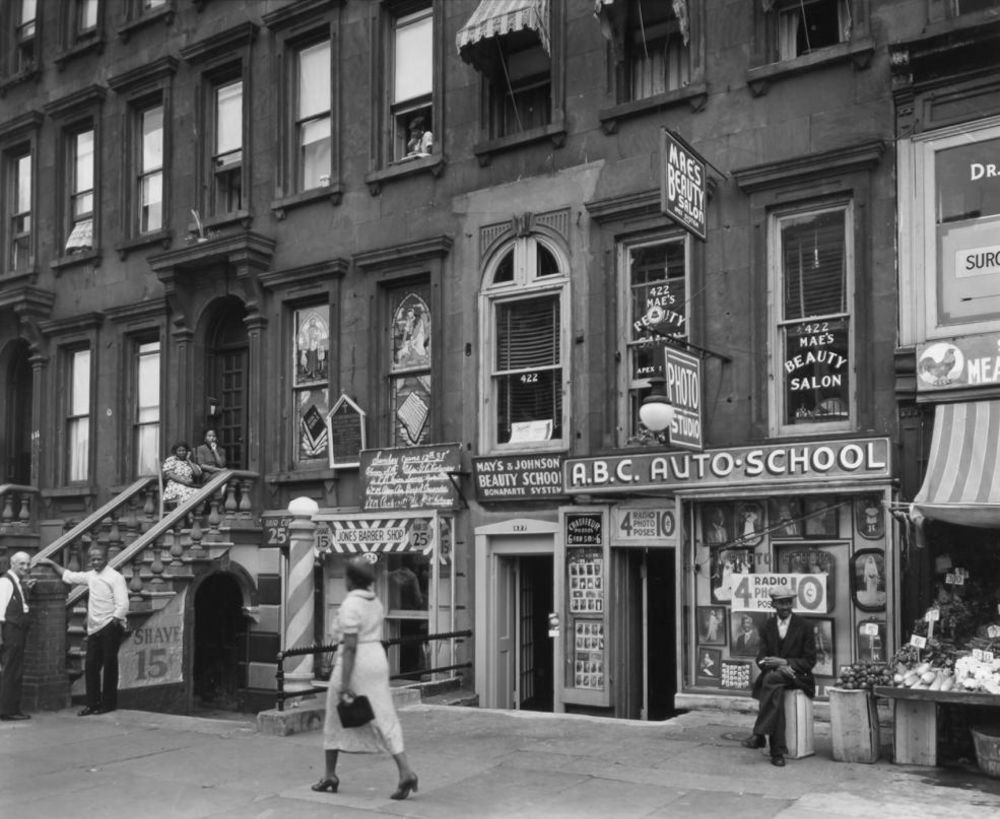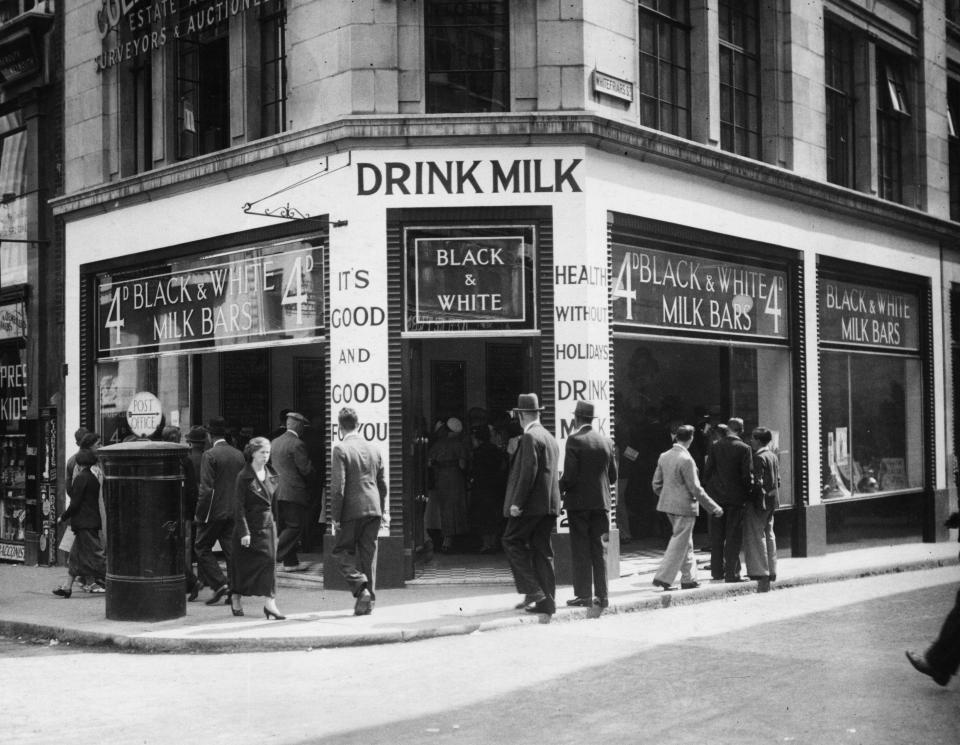Exploring The Elegance Of Black And White 1930s Vintage Boulevard
In the vibrant tapestry of art and culture, the 1930s stand out as a decade of transformation and innovation. The black and white vintage boulevard of this era encapsulates a unique blend of style, sophistication, and nostalgia. This article takes you on a journey through the enchanting world of 1930s vintage boulevards, exploring their significance, aesthetics, and cultural impact.
The allure of black and white photography during the 1930s adds a layer of timelessness to the images captured in this period. As we delve deeper into the essence of these boulevards, we will uncover the artistic movements that flourished and the societal changes that influenced them. From the art deco architecture to the fashion of the day, every element plays a crucial role in defining the vintage atmosphere of the 1930s.
Join us as we explore the essential features of black and white 1930s vintage boulevards, their historical context, and their enduring legacy in contemporary culture. Whether you are an art enthusiast, a history buff, or simply curious about this fascinating era, this article promises to provide valuable insights and captivating stories.
Table of Contents
- Historical Context of the 1930s
- Aesthetic Features of Vintage Boulevards
- Photography Techniques in the 1930s
- Cultural Impact of Black and White Boulevards
- Famous 1930s Boulevards
- Fashion and Style of the 1930s
- Legacy of the 1930s Vintage Boulevard
- Conclusion
Historical Context of the 1930s
The 1930s were marked by significant global events, including the Great Depression and the rise of totalitarian regimes in various countries. These circumstances influenced artistic expression and cultural production. Artists and photographers sought to capture the struggles and triumphs of everyday life, leading to an exploration of realism and modernism.
As cities expanded, boulevards became vital centers of social interaction and commerce. The architectural styles reflected the aspirations and challenges of the time, incorporating elements of art deco and streamlined design. Understanding the historical context of this decade helps to appreciate the depth of the black and white vintage boulevard imagery.
Aesthetic Features of Vintage Boulevards
Vintage boulevards of the 1930s are characterized by distinct aesthetic features that reflect the artistic sensibilities of the time. Key elements include:
- Architecture: The art deco movement brought sleek lines, geometric shapes, and ornamental details to buildings.
- Street Design: Wide, tree-lined avenues, often featuring intricate paving patterns.
- Signage: Neon and illuminated signs that added vibrancy to the street scene.
- Public Spaces: Parks and plazas designed for social gatherings and leisure activities.
Influence of Art Deco
Art deco played a pivotal role in shaping the visual identity of 1930s boulevards. This style emphasized elegance and modernity, often using luxurious materials and bold colors, even in its black and white representation. The juxtaposition of light and shadow in photography captured the essence of art deco architecture beautifully.
Photography Techniques in the 1930s
The 1930s marked a significant evolution in photography techniques, particularly in black and white imagery. Photographers experimented with various methods to enhance the emotional depth of their work. Key techniques included:
- Contrast: High contrast images highlighted the interplay of light and shadow.
- Composition: Strategic framing and perspective created dynamic visuals.
- Texture: Emphasizing textures added richness to the visual narrative.
The Role of Photojournalism
Photojournalism emerged as a powerful medium in the 1930s, with photographers documenting social issues, political movements, and daily life. The black and white vintage boulevard became a canvas for storytelling, conveying the complexities of the human experience during a tumultuous time.
Cultural Impact of Black and White Boulevards
The black and white vintage boulevards of the 1930s had a profound cultural impact that transcended the visual arts. They served as symbols of resilience and hope amidst adversity. The imagery captured during this period reflects the collective consciousness of society, addressing themes of urbanization, leisure, and social interaction.
The representation of boulevards in literature, film, and art further solidified their cultural significance. They became settings for narratives that explored human emotions, relationships, and the pursuit of happiness.
Famous 1930s Boulevards
Several boulevards from the 1930s have become iconic, representing the architectural and cultural essence of the era. Notable examples include:
- Champs-Élysées, Paris: Known for its grandeur and elegance, this famous avenue became synonymous with luxury and high fashion.
- Sunset Boulevard, Los Angeles: A symbol of Hollywood glamour, this boulevard was the backdrop for countless films and celebrity culture.
- Fifth Avenue, New York: Renowned for its upscale shops and cultural institutions, this avenue epitomized urban sophistication.
Fashion and Style of the 1930s
The fashion of the 1930s was characterized by elegance and refinement. The black and white vintage boulevard scenes often featured well-dressed individuals, showcasing the style of the time. Key fashion trends included:
- Women’s Fashion: Long, flowing dresses, tailored suits, and cloche hats.
- Men’s Fashion: Wide lapels, high-waisted trousers, and fedora hats.
- Accessories: Statement jewelry and handbags that complemented outfits.
Influence of Hollywood
Hollywood's influence on fashion during the 1930s cannot be overstated. Film stars became style icons, and their appearances on black and white boulevards were often captured in the media, shaping public perception of elegance and glamour.
Legacy of the 1930s Vintage Boulevard
The legacy of the black and white 1930s vintage boulevard continues to resonate in contemporary culture. Modern photography, fashion, and design often draw inspiration from this era, celebrating its timeless charm and artistic significance.
Art exhibitions, film retrospectives, and fashion shows frequently revisit the aesthetics of the 1930s, ensuring that the allure of vintage boulevards remains alive for future generations.
Conclusion
In conclusion, the exploration of black and white 1930s vintage boulevards reveals a rich tapestry of history, art, and culture. From their aesthetic features to their cultural impact, these boulevards embody the spirit of a transformative era. We invite you to share your thoughts in the comments below and explore more articles that delve into the fascinating world of vintage culture.
Thank you for joining us on this journey through the elegance of the past. We hope to see you again as we continue to explore the stories and styles that shape our understanding of history.
Michael Jackson 1985: A Year Of Transformation And Triumph
Justin Bieber Photo With Fans 2014: A Memorable Year Of Connection
Cute Animals Drawing: A Complete Guide To Bringing Adorable Creatures To Life On Paper

32 Stunning Black and White Photographs That Capture Street Scenes of

32 Stunning Black and White Photographs That Capture Street Scenes of

24 Fascinating Black and White Photos That Show a Vibrant London in the